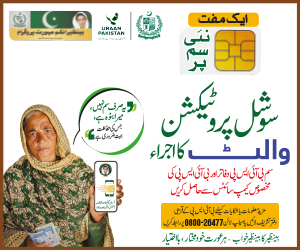Conflicts Between Ukraine and Russia
Tayyaba Khan (Kallar Syedan)
DIPLOMATIC EFFORTS
The conflict in eastern Ukraine has resulted in thousands of deaths and displacement of civilians, with both sides accusing each other of violating ceasefires and escalating violence. Diplomatic efforts, including the Minsk agreements, have been made to find a peaceful resolution, but the situation remained fragile.
The annexation of Crimea by Russia in 2014 was met with widespread condemnation from the international community, leading to sanctions against Russia by Western nations. However, Russia has continued to assert its control over the region.
The historical relationship between Ukraine and Russia is deeply intertwined, dating back centuries. Ukraine, located at the crossroads of Eastern Europe, has a rich cultural heritage and a long history of statehood. Kyivan Rus, a medieval East Slavic state, laid the foundations for both Ukrainian and Russian identities. In the modern era, Ukraine was part of the Russian Empire until the Bolshevik Revolution of 1917, which led to the establishment of the Soviet Union. During Soviet times, Ukraine experienced rapid industrialization and urbanization but also endured repression and forced collectivization under Stalin’s rule. The dissolution of the Soviet Union in 1991 marked a pivotal moment in Ukrainian history. Ukraine declared independence, becoming a sovereign state for the first time in centuries. However, the breakup of the Soviet Union left unresolved issues, including the status of Crimea and the presence of ethnic Russians in eastern Ukraine.
Tensions between Ukraine and Russia escalated dramatically in 2014 when Russia annexed Crimea, a peninsula in the Black Sea with historical ties to Russia. Russia’s actions in Crimea were widely condemned by the international community, which viewed the annexation as a violation of Ukraine’s sovereignty and territorial integrity.
CONFLICT IN EASTERN UKRAINE
In the aftermath of the annexation of Crimea, pro-Russian separatist movements emerged in eastern Ukraine, particularly in the Donetsk and Luhansk regions. These separatists, with support from Russia, declared independence and sought to break away from Ukraine. The Ukrainian government, fearing further disintegration of its territory, launched military operations to regain control over the separatist-held areas.
The conflict in eastern Ukraine has been characterized by sporadic fighting, ceasefire violations, and civilian casualties. Both sides have accused each other of human rights abuses and war crimes. Despite multiple ceasefire agreements, brokered by international mediators such as the Organization for Security and Co-operation in Europe (OSCE), the conflict has persisted, resulting in a humanitarian crisis with thousands dead and millions displaced.
INTERNATIONAL RESPONSE
The annexation of Crimea and the conflict in eastern Ukraine have triggered a series of international responses, including economic sanctions imposed on Russia by the United States, the European Union, and other Western countries. These sanctions have targeted key sectors of the Russian economy, including energy, finance, and defense, in an effort to pressure Russia to change its course.
At the same time, Western countries have provided political and military support to Ukraine, including financial assistance, training for Ukrainian armed forces, and non-lethal aid such as medical supplies and equipment. However, there has been reluctance among some Western nations to provide lethal aid for fear of escalating the conflict further.
CYBER WARFARE AND DISINFORMATION
In addition to conventional military tactics, the conflict between Ukraine and Russia has involved cyber warfare and disinformation campaigns. Both sides have been accused of hacking into each other’s networks, spreading propaganda, and manipulating public opinion through social media and other channels. These tactics have further complicated efforts to find a peaceful resolution to the conflict and exacerbated tensions between the two countries.






Comments are closed, but trackbacks and pingbacks are open.